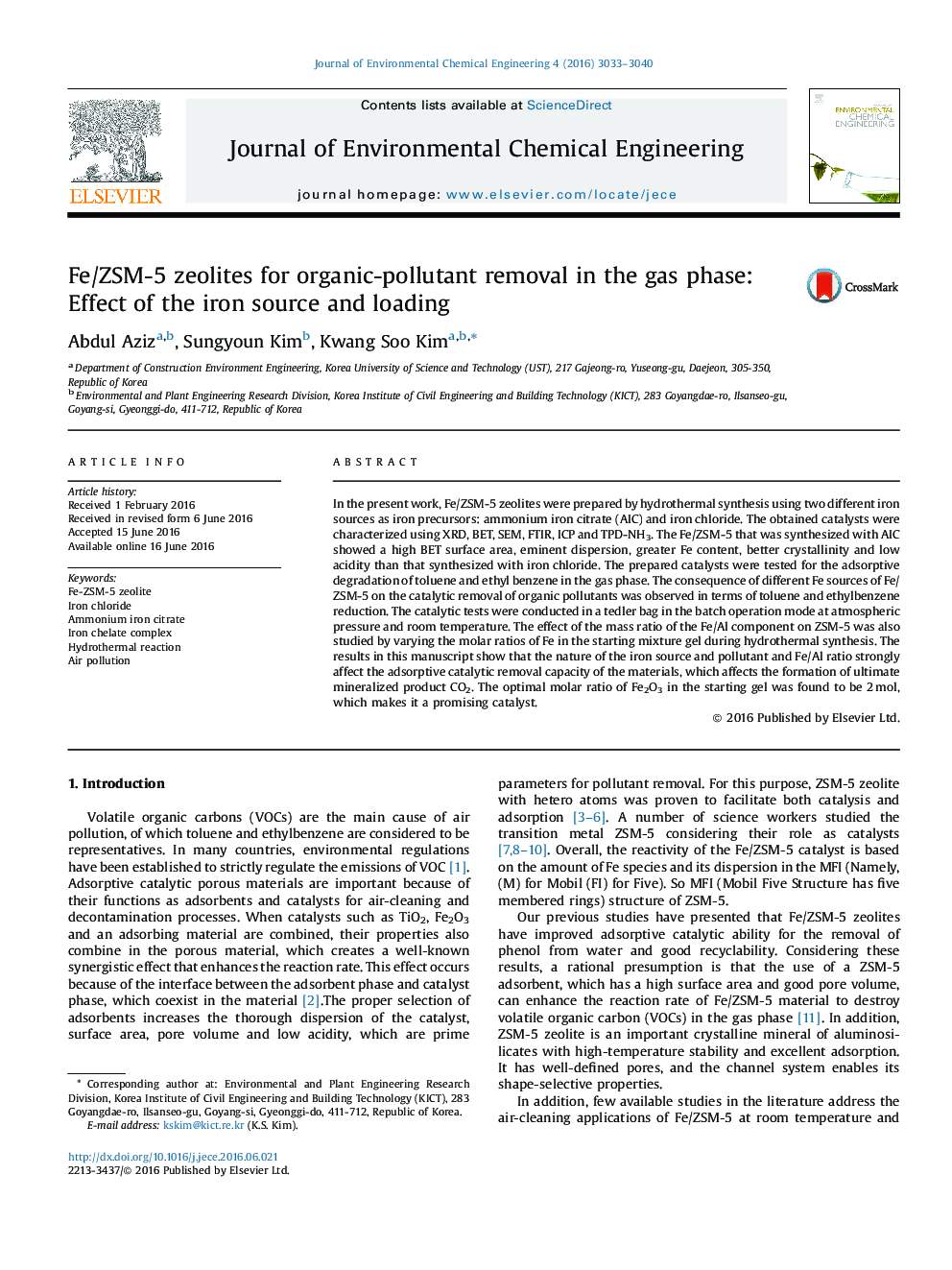| Article ID | Journal | Published Year | Pages | File Type |
|---|---|---|---|---|
| 221570 | Journal of Environmental Chemical Engineering | 2016 | 8 Pages |
•Fe/ZSM-5 zeolites were successfully synthesized by hydrothermal incorporation of Fe2O3 from two different iron sources.•Iron source affects the VOC adsorption.•Fe2O3 on ZSM-5 from AIC source show better MFI characteristics and dispersion.•Fe/Al ratio influences the adsorption as well as degradation of VOC to CO2.•Proper optimization between Fe/Al ratio and physicochemical properties show more removal with mineralization without irradiation.
In the present work, Fe/ZSM-5 zeolites were prepared by hydrothermal synthesis using two different iron sources as iron precursors: ammonium iron citrate (AIC) and iron chloride. The obtained catalysts were characterized using XRD, BET, SEM, FTIR, ICP and TPD-NH3. The Fe/ZSM-5 that was synthesized with AIC showed a high BET surface area, eminent dispersion, greater Fe content, better crystallinity and low acidity than that synthesized with iron chloride. The prepared catalysts were tested for the adsorptive degradation of toluene and ethyl benzene in the gas phase. The consequence of different Fe sources of Fe/ZSM-5 on the catalytic removal of organic pollutants was observed in terms of toluene and ethylbenzene reduction. The catalytic tests were conducted in a tedler bag in the batch operation mode at atmospheric pressure and room temperature. The effect of the mass ratio of the Fe/Al component on ZSM-5 was also studied by varying the molar ratios of Fe in the starting mixture gel during hydrothermal synthesis. The results in this manuscript show that the nature of the iron source and pollutant and Fe/Al ratio strongly affect the adsorptive catalytic removal capacity of the materials, which affects the formation of ultimate mineralized product CO2. The optimal molar ratio of Fe2O3 in the starting gel was found to be 2 mol, which makes it a promising catalyst.
